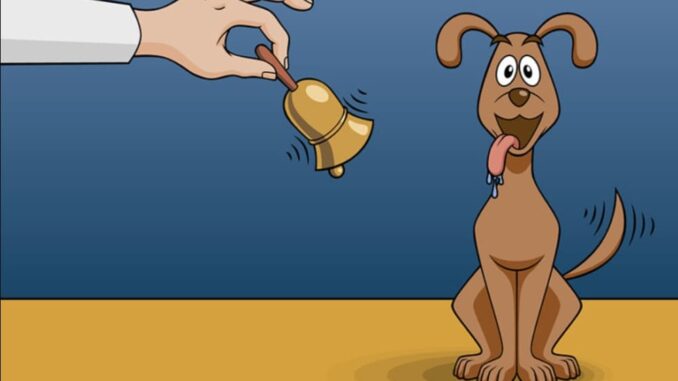
The most recent topic was the design of slot machines at the Gambling Symposium in March of this year. Several methods were presented here with which the industry should try to influence player behavior. But which tricks do the developers use to keep the players involved in their games for as long as possible?
Is the player a Pavlovian dog?
The head of the Gambling Research Center, Prof. Dr. Tilman Becker, saw parallels between gambling behavior and Pavlov’s dog at the gambling symposium. According to this, because of their conditioning, the players would react to the stimuli triggered by gambling with a certain trained behavior. The various software manufacturers would also reinforce this behavior through “addiction by design”.
The Pavlovian dog is the first empirical experiment carried out by the Russian Nobel Prize winner and researcher Ivan Pavlov. The aim was to demonstrate classical conditioning.
This is how the “Pavlov experiment” worked
Pavlov initially had a dog fed and was able to observe an unconditioned reaction (salivation) in the animal. Thereupon he used a neutral stimulus with a bell without food, which in turn did not result in a conditioned reaction. Before the next feeding he used a bell, which in turn caused the dog to salivate as a reaction. After the dog was conditioned accordingly, the use of the bell without food was sufficient to trigger a conditioned stimulus, namely the flow of saliva, in the dog. Prof. Dr. Tilman Becker has now compared this behavior, discovered in 1905, with that of gamblers in gambling today.
What design tricks do the game developers use?
As Prof. Dr. Becker reports, the user interfaces of the slot machines are designed in such a way that the conditioning described above can be achieved. For this purpose, buttons are used, among other things, that encourage clicking. The game developers also pursue the goal of making the player believe that he can control the outcome of the game. Of course, this is not possible in practice. But by cleverly arranging the controls, the player subconsciously thinks that he can influence the outcome of the game.
In addition, more and more modern technology is being used to disguise the relationship between profits and losses. This means that even small prizes are highlighted or staged with the help of animations and time delays. Losses, on the other hand, should be quickly forgotten, so that in the event of a failure, the next spin takes place quickly.
Players are “tricked”
To put it badly, players are downright tricked when playing slot machines. The game developers often design their slot machines in such a way that the users quickly lose track and also misjudge their chances of winning because too many stimuli are set. In addition, the gambling symposium criticized the fact that virtual games are becoming more and more complicated, so that in many cases customers are spending significantly more money. This was pointed out by Prof. Dr. Lucia Reisch from Copenhagen Business School.
Increased availability and advertising are risk factors
For the players, it is not just the design of the slot machines that are potentially addictive. The availability of virtual casino games has also increased in recent years, so that you can play around the clock at any time. At the Gambling Symposium, the experts were able to identify gambling advertising as a further risk factor. This is what Dr. Tobias Hayer from the University of Bremen that especially young men with a low level of education, a migration background and low income are prone to gambling addiction. Just a few weeks ago we reported that, according to the player protection organization GambleAware, a few players generate the majority of sales.
Conclusion
Of course, the software manufacturers try to develop slot machines that are well received by gamers. The more the users are tied to the game, the more successful a slot machine can be. It is therefore no wonder that software providers try to condition the players with design tricks, among other things. This means that the players are subtly influenced, for example by using buttons that animate them to click or by using complex game principles where the user can quickly lose track of things. On the face of it, however, the game developers usually just want to offer the gaming guests an entertaining gaming experience.


Be the first to comment